I bought this fibreglass hull at a club meeting a couple of years ago.
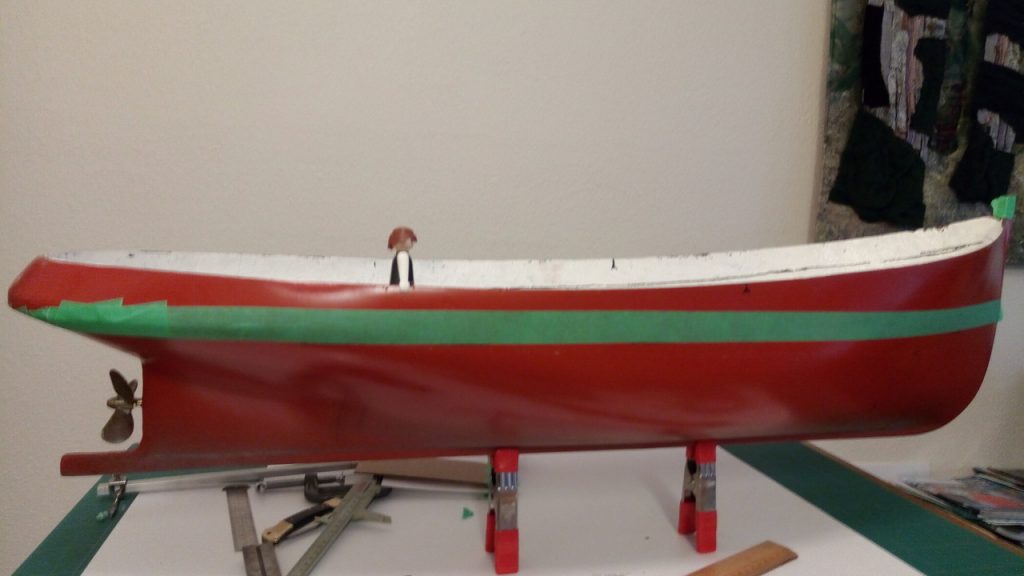
So with at least 2 months of apartment confinement facing me, (Corona virus), I dragged it out of the storage cubicle to take a look. It’s 37 inches long, the space for the prop is very large for the hull shape, and the tumblehome at the stern just screams TUG! The Playmobil figure at a scale of 1/2 inch, to the foot, (1:24), would be 5 feet 9inches tall, and the tug would be 74 feet long. The hull lines are quite fine, and the beam narrow by modern tug standards.

So, although I actually know nothing about the original design, or who made up the hull, I think this is a hull shape designed for the relatively low horsepower of an early twentieth century steam engine, and I like very much the idea of finishing it as a West Coast Steam Tug, with the delightful style of superstructure that such tugs had here in Victoria, B.C. As you see, I have a prop and shaft already in place. It’s a 60 mm. prop on a 4 mm. diameter shaft. I think that there’s room there to go to a 70 mm or even, possibly, a 75 mm, and I haven’t ruled out doing that. One of my ambitions for this build is for it to have authority on the water. I love the stories from the old steam tugs that the Captain and Engineer, working together, could control the prop to a fraction of a single turn, and the tug would respond. So I have ordered for it a 775 slow speed brushed motor, rated 3000 rpm at 12 volts no load, and a toothed belt reduction gear set for a 3:1 reduction. Having thus put the cart before the horse, I’ll get to the speed calculations in a bit.
These design decisions don’t go in a straight line when I am doing them. It’s a process of circling around them, seeing if some sort of sense comes out, and then trying going round again.
So, today, fiddling around with the hull, I decided that a starting point would be that she should float with the keel parallel with the waterline to look right. And that the draught of the model, waterline to the bottom of the keel, would be about right at 120 mm. If you look at the picture of the Steam Tug Master, below, you’ll see that the waterline at the stern is a little below and forward of the rubbing strake that defines the turn of the tumblehome at the stern.
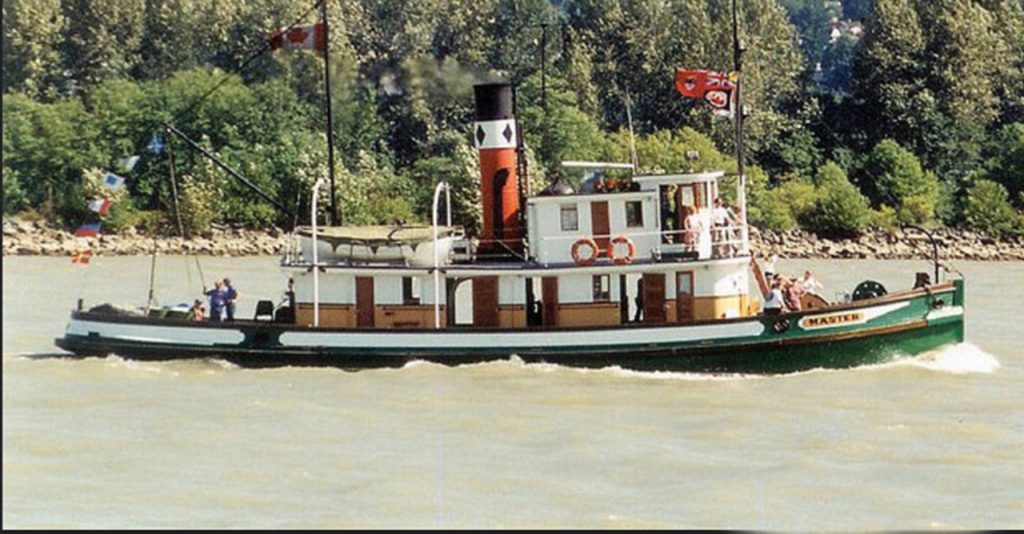
The Master is in a bit of a chop, and moving quite smartly in this picture. Stopped and in still water, the rear waterline would be lower, making that horizontal vee between the water and the underside of the stern perhaps twice as long. That’s how I defined the point of measurement for the distance of the waterline to the bottom of the keel, and that gave me 120 mm.

So the bottom edge of the masking tape is that projected waterline. The width of the tape gets in the way of the picture a little, but I think it will be somewhere near right on the water. Now the point of all that is the upcoming bathroom tub test of the hull. I have, (somewhere), a bunch of lead pucks that I can load into this hull until it floats to that line in the bathtub. Weighing the lead pucks and the hull itself will then tell me the total displacement that the model should finish at. Allowing that I will need a couple of pounds of moveable ballast to get the trim right in the finished model, I can start to get an idea of just how much weight I can build into this boat.
The next thing I have done on the hull is to draw in a guess at the line of the deck. You can see that my Playmobil deck hand has a grip on the top of the gunwale. I moved him around the inside of the hull with his fist in the same position and a Sharpie under his foot. The result is the black line you see on the inside. If I install a 1/8 inch plywood deck just on, but above, that line, then the gunwale will be just at my guy’s fingertips, which is just where it should be. This figure is going to be all kinds of handy in designing the superstructure and building it.

Hercules 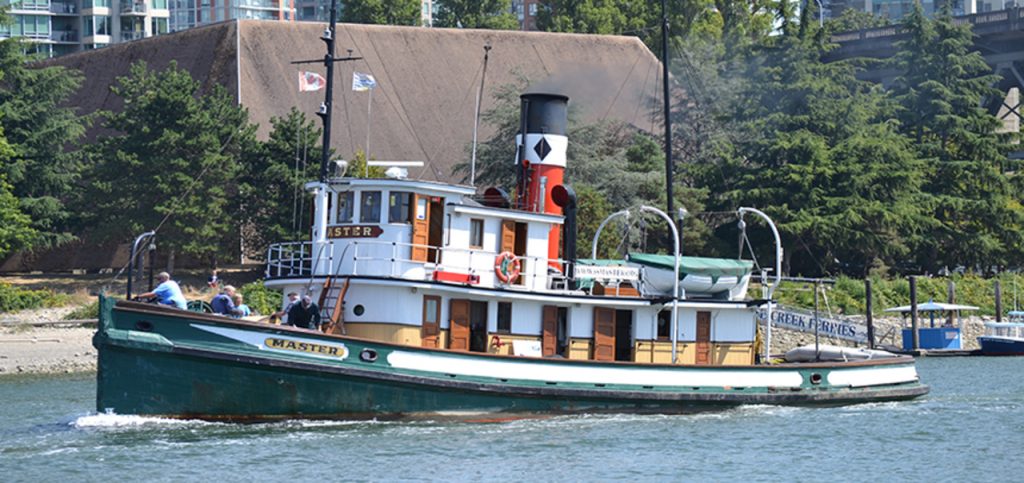
Master 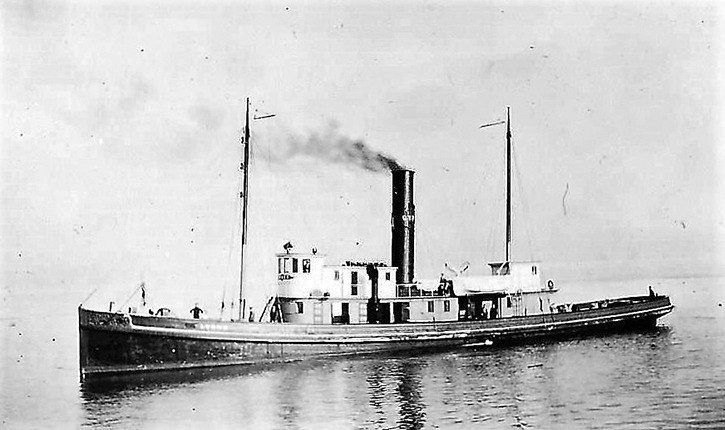
Lorne
Next, I should talk about the prototypes that I have in mind in building this model. Above are three of them. The Hercules, 155 feet, is alive and well in San Francisco Maritime Park. The Master, 85 feet, is also still operating under steam out of Vancouver, thanks to the SS Master Society, and the Lorne, unfortunately long gone, was Victoria’s most famous tug, owned by the Dunsmuirs.
The fourth and final prototype is the Swell, 88 feet. Swell has been converted to a diesel driven, 12 passenger tourist vessel. Beautifully done, and she is based right here in Victoria with Maple Leaf Adventures. So today’ exercise outing was down to the harbour and taking a bunch of photos of Swell. Here are some below:-
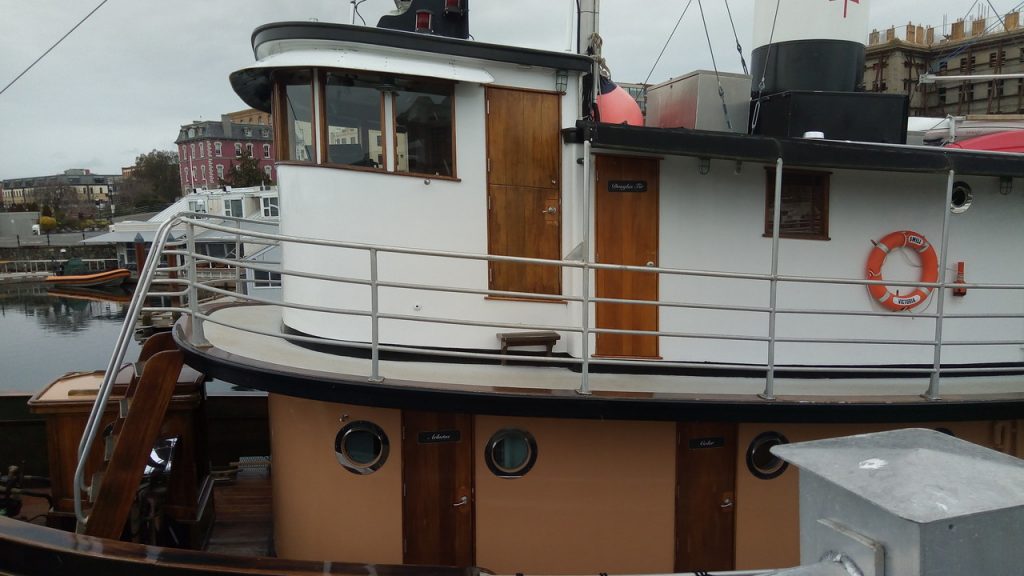
Wheelhouse on Swell. 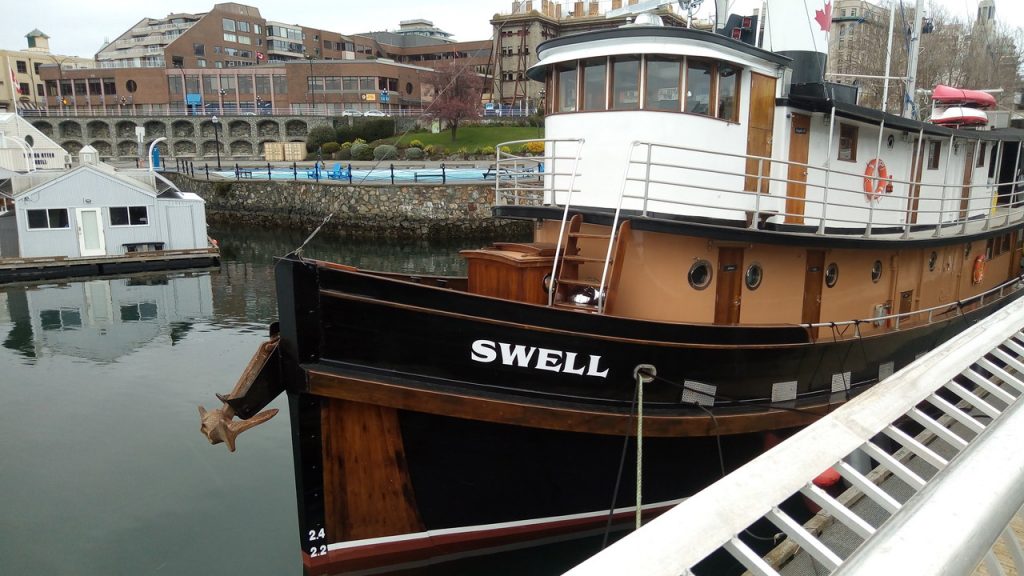
Bow View
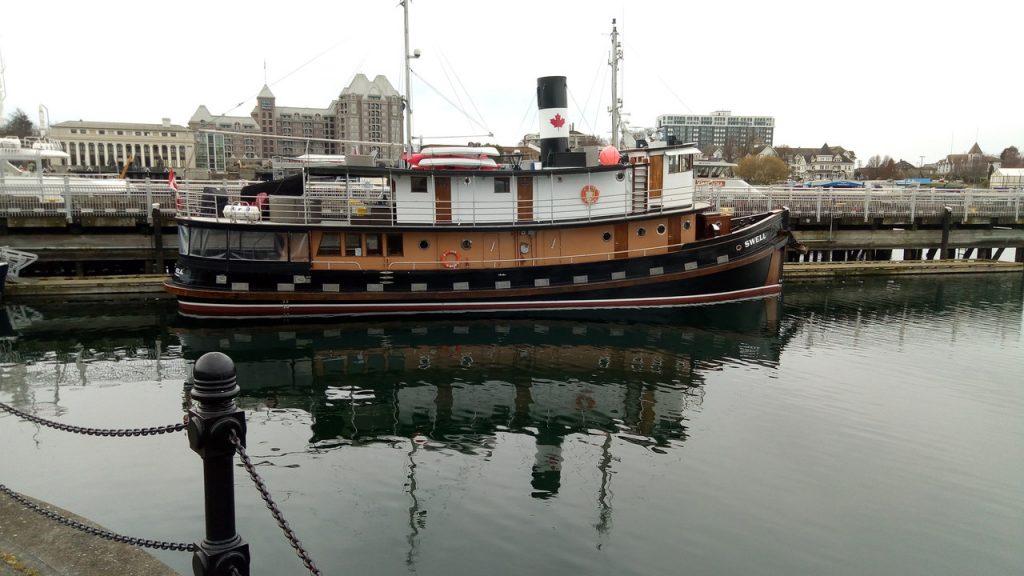
The “look” that these vessels have in common, and that I like so much, is based on two things. First, the superstructure roof lines follow the sheer line. Look at the wheelhouse door on Swell, above. It’s way off square and that’s what gives these boats so much character. Only the verticals are straight. Second is the rounded fronts of the superstructure, formed by constructing them of relatively narrow vertical planks. Add the out of square windows, following the front curve and the sheer line, albeit filled with flat glass, and you are looking at a carpentry tour de force. I am going to try to do it with coffee stirrers.
More another day!
